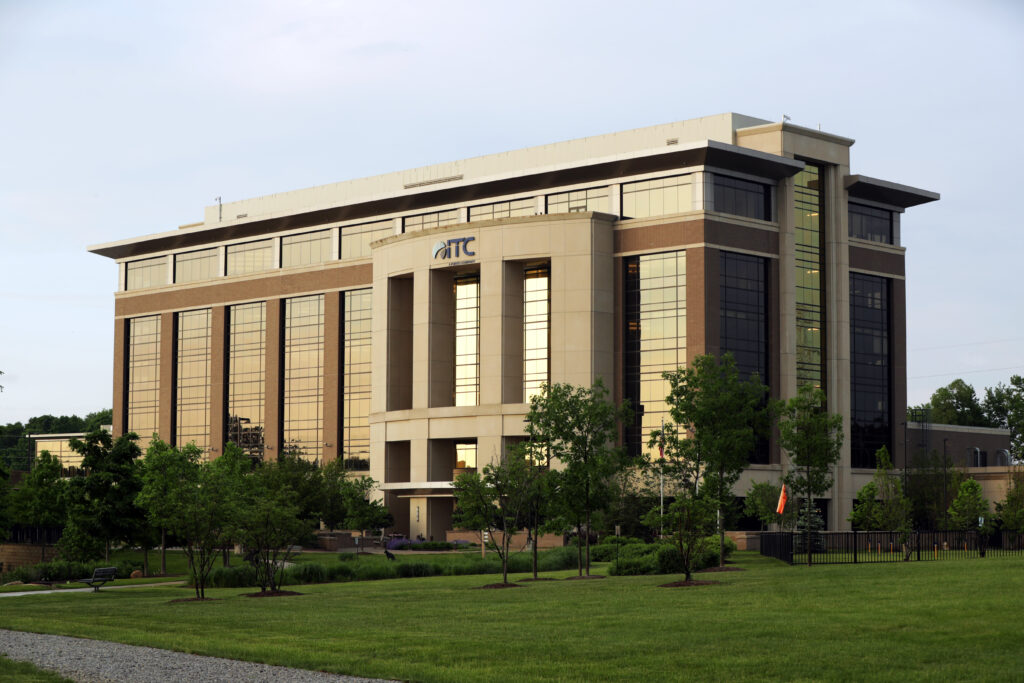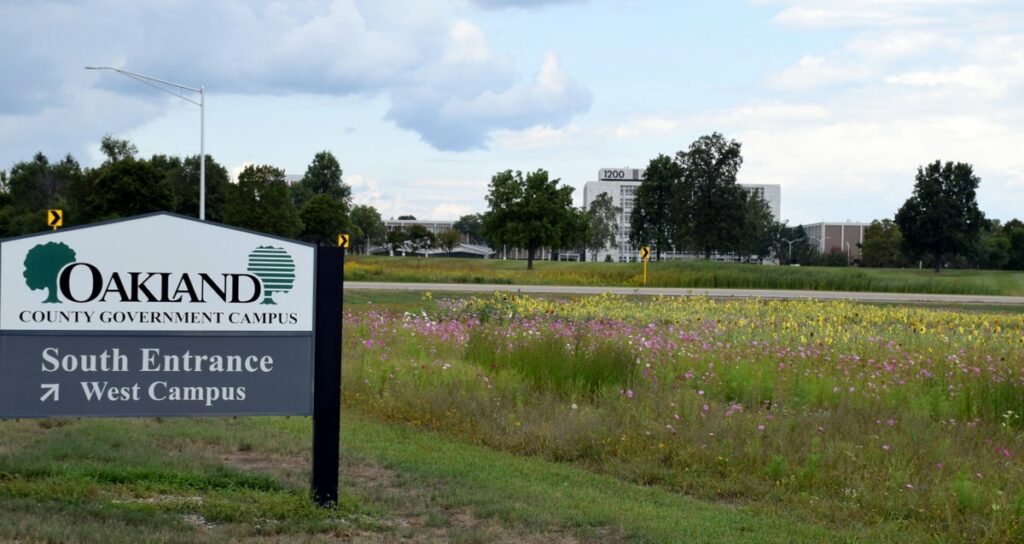ITC Holdings and Its Role in a Greener Grid

Founded in 2003 and headquartered in Novi, Mich., ITC Holdings builds, operates, and maintains high-voltage electric transmission systems that carry electricity in Michigan and around the Midwest. The company owns and operates approximately 16,000 circuit miles of transmission lines across 90,000 square miles of service territory. SBN Detroit interviewed Simon Whitelocke, senior vice president and chief business officer to find out more. Q: How does ITC approach sustainability? A: We are central to a broader sustainability initiative aimed at decarbonizing the electrical grid, facilitating the shift by interconnecting greener electricity, even though we don’t generate it ourselves. When building transmission infrastructure, we are highly mindful of our environmental impact. Our transmission lines, which have a lifespan of sixty to seventy years, traverse both urban and rural areas. We strive to be good neighbors to the environment, habitats, and wildlife around them. Before starting a transmission project, we conduct an environmental assessment to determine the best route, the type of land it will occupy, and potential impacts on sensitive habitats or endangered species. We also carefully plan the construction timing to minimize its environmental impact. Q: How has ITC evolved over time when it comes to sustainability? A: From day one, ITC has prioritized being mindful of our impact, making environmental responsibility a core part of our company culture. As we’ve expanded into diverse geographies and worked in various environments, our commitment has deepened. Our repertoire and tools have grown and adapted over time, leading to enhanced and improved expertise. Q: How has the infrastructure evolved, and what are the solutions for building toward sustainability? A: We operate with significant oversight, often collaborating with federal, state, and local governments, which provide a framework of standards. Cities and states have developed sustainability plans that we work within. For example, Michigan has the MI Healthy Climate Plan, and we align our efforts with it. The public is also more aware and engaged, and there is much greater support for sustainability initiatives today. Q: How does your work vary from state to state when it comes to dealing with habitat and environment? A: Every state presents unique challenges and regulates environmental matters differently, so it’s certainly not a one-size-fits-all approach. At the federal level, there are baseline protections for certain species that apply nationwide, but some states have additional protections for species-specific to their region. For instance, Michigan is unique due to its extensive wetlands. Compared to Iowa, which has fewer trees and less water, Michigan presents a totally different set of environmental factors. These variations create a lot of state-to-state differences in our work. We collaborate with local and federal governments on mitigation plans to ensure our impact on the environment is as minimal as possible. What are the biggest challenges that you encounter in managing habitat around building and maintaining infrastructure, and what are the lessons you have learned along the way? A: ITC takes great care to protect the environment and habitats surrounding our infrastructure, but the most challenging item we have encountered is invasive species. To counter this, we employ adaptive management techniques, meaning, that once we plant something, we don’t just walk away from it. We consult with biologists to regularly monitor those areas to control, and remediate, any invasive issues that may arise. Q: How do you handle materials and recycling? A: We partner with Goodwill Greenworks, among other recyclers, to recycle our construction material. As we replace infrastructure the old materials such as wires, cables, and metal copper steel go to them, versus a landfill. Goodwill Greenworks also creates job opportunities and supports community development by training individuals in green jobs and environmental management. When we decommission old equipment, such as batteries at substations, we ensure that these materials are properly recycled. This includes recycling oil, metals, and other components with the help of our experts. We send concrete structures used as foundations for equipment to recyclers that crush and reuse it as aggregate, or to produce new concrete. Similarly, untreated wood, such as old pallets or shipping crates is recycled into mulch or used as fuel for co-generation. Also, old wooden poles are often donated to landowners versus having to be disposed of in a landfill. Overall, we are increasingly focused on recycling and being mindful of our environmental impact. Q: How does ITC incorporate sustainability into its operations beyond infrastructure and recycling? A: In 2022 we received a Gold Tier Program Award for our efforts at our Novi headquarters and we’ve been awarded several Conservation Certifications from the Wildlife Habitat Council. I think this demonstrates our commitment to environmental stewardship. The property the campus sits on includes significant wetland areas, and we are highly sensitive to maintaining and protecting these natural spaces. This approach extends to our transmission corridors and warehouses, where we prioritize living in harmony with the environment. The 2003 blackout was ultimately triggered by a power line coming in contact with a tree, so we are particularly mindful of managing vegetation under our power lines. When we remove trees, we have replaced them with habitats such as prairies that support local species and pollinators. This reflects our focus on sustainable land management practices. Additionally, many of our transmission corridors are integrated with walking and biking trails, allowing people to connect with nature while ensuring the reliable delivery of electricity. We strive to balance the need for power with the importance of preserving green spaces. Be sure to subscribe to our newsletter for regular updates on sustainable business practices in and around Detroit.
Sustainability Progress in Oakland County

Erin Quetell became Oakland County’s first chief environmental sustainability officer in 2021 after working for four years as the City of Ferndale’s environmental sustainability planner. Quetell received a bachelor’s degree in Biology from Grand Valley State University and a master’s degree in Public Administration in Environmental Science and Policy from Columbia University in New York. Before her time in Ferndale and Oakland County, Quetell worked in the private and nonprofit sectors with a focus on environmental issues through service in the Huron Pines AmeriCorps program, at the Greening of Detroit, and through consulting at OHM Advisors. She is a graduate of the 2020 Michigan Women’s Municipal Leadership program and Leadership Oakland Class XXIX. She served as previous co-chair for the Great Lakes Climate Adaptation Network, and is a current board member for the nonprofits Make Food Not Waste and the Clinton River Watershed Council. SBN Detroit spoke with Quetell about her work, sustainability priorities, and how businesses in the county can be involved. Q: In 2021, you stepped into the role of Oakland County’s first sustainability officer. Now, two years later, what impact do you think you’ve been able to make? A: Well, it’s not just me. I do have a small team, and what I’m most proud of is we conducted a competitive bidding process and negotiated a renewable energy purchase so that we now have a third-party purchase agreement. Seventy percent of all electrical needs for Oakland County facilities will be from solar, which helps us toward our climate goals and helps demonstrate the priority of our decarbonization goals. Additionally, we have finalized an environmental sustainability plan for the county campus and facilities which includes a review of all the county’s buildings to best determine energy and water efficiency improvements, accessibility, carbon reduction, and other sustainability-related upgrades. Also notable, I think, is the work we are doing on the tri-county electric vehicle planning project. Residents and businesses are definitely interested in electrification, and we want to be able to offer people in our 62 cities, villages, and townships the resources they need to learn more. To that end, we developed an EV toolkit that’s a great resource for anyone interested in EV deployment. Q: What are your top priorities for the county when it comes to sustainability? A: We’ve been working to have a very clear understanding of what we need to do as an entire county in response to the climate crisis. Being fairly new in this role, I’ve been spending time meeting with groups and organizations to understand all local activity and in turn working to align with the MI Healthy Climate Plan with these greater efforts to maximize impact. As I mentioned, electrification is a priority along with the alternative fuel corridors throughout Oakland County. With funding in the pipeline, we are identifying ways and partners to expand these alternative fuel corridors to include right of ways such as Grand River and Woodward and also facilitate greater community engagement around future vehicle electrification in general. Another priority is continuing the county’s energy efficiency programming – such as weatherization programs – and leveraging opportunities to reduce the energy burden for residents and businesses. We have underrepresented communities in Oakland County that have been left out, and we need to provide help and resources to everyone going forward. Q: I read that Oakland County became part of a class of 16 communities across the country that will be working to get the county LEED-certified by late 2023. What impact will this have on the county, stakeholders, residents, and businesses? A: You can’t manage what you don’t measure and LEED certification for counties is a really good basis for sustainability metrics. LEED for cities sets a framework to collect data. The outcome of these metrics can then be utilized as a resource for businesses in the county in their acquisition and retention of talent – showing that it’s a good place to live and work. Q: How do you work with businesses in the county to become more sustainable or equitable? A: One piece of the puzzle is our procurement practices. We are being very intentional in diversifying contractors and suppliers for county opportunities. Back to the LEED Certification, we can share out stronger metrics and qualifications when we bid out projects. Government contracts can be overwhelming for smaller companies, and this information will make things clearer so we can ultimately work with a broader range of companies in the county. Outwardly facing, we have a large education push, specifically through our Oakland80 program, community navigators, and other workforce development programs. As electrification becomes more prevalent, people need additional and new training to support that transition. We are working to make sure our future workforce is nimble and has the skills in demand. So far, much of my work has been networking and discussion. I have been in many conversations with various businesses related to mobility solutions such as electric vehicle charging infrastructure, batteries, and other sustainability practices. I work closely with our economic development team to start integrating more sustainability opportunities and show how the county is supportive and pushing for greater sustainability. There is still much to be done. Q: What impact do you think Southeast Michigan businesses have on sustainability within the county and as it pertains to your role? A: I think businesses have a lot more potential to move the needle than many people realize. One of the things we are talking about is how can we develop more sustainability networks and resources and how can we work collaboratively toward our climate goals. Businesses are becoming vested, and we are starting to see more collaboration, understanding, and pressure to address greater ESG efforts. There is so much opportunity here – we have not scratched the surface, and I look forward to the potential outcomes. Q: What advice would you give businesses in Oakland County if they are looking to work together toward sustainable practices? A: I think starting with evaluating where you are today is the best way


